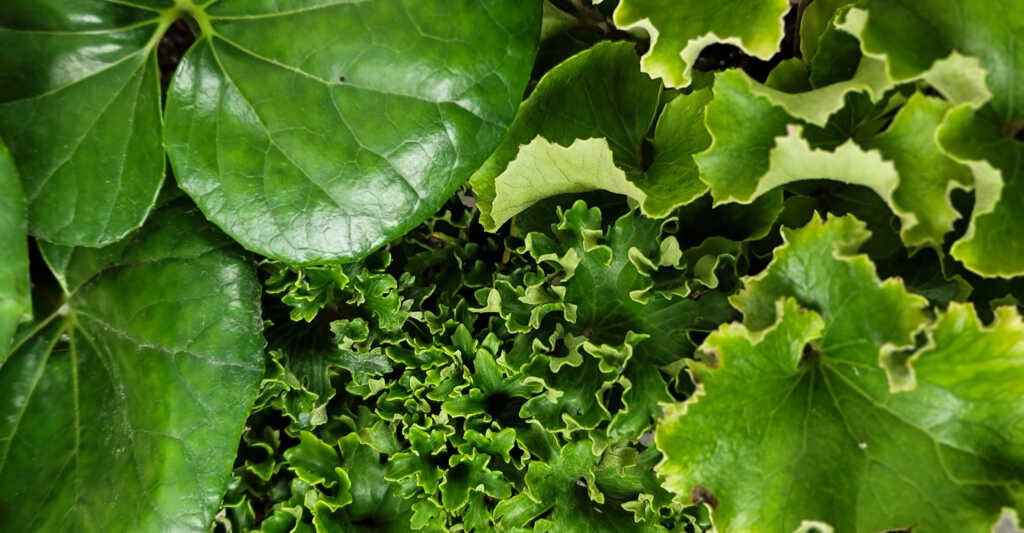
Leopard Plants (Farfugium japonicum) are captivating perennials native to Japan, Korea, and Taiwan. They are cherished for their unique foliage and vibrant yellow flowers, making them a popular choice for shaded garden spots and indoor plant collections. Known for their adaptability and ornamental value, Leopard Plants include several varieties, such as the Giant Leopard Plant, Firefly Leopard Plant, and Crested Leopard Plant.
Leopard Plants thrive in the damp, shaded habitats of East Asia. They have several notable varieties: the Giant Leopard Plant, known for its large, glossy leaves that can reach up to 18 inches in diameter; the Firefly Leopard Plant, which features large, kidney-shaped leaves with vibrant yellow spots; and the Crested Leopard Plant, recognized for its intricately crested and ruffled leaves.
Light
These plants prefer shaded to partially shaded areas, as direct sunlight can scorch their leaves. Ideal planting locations receive filtered or dappled light. They thrive in USDA hardiness zones 7-10.
Water
Proper watering is essential for Leopard Plants, which require consistent moisture to thrive. Keep the soil consistently moist but not waterlogged, watering when the top inch of soil feels dry. Avoid overwatering, as too much water can lead to root rot. Ensuring proper drainage will prevent water from pooling around the roots. Applying a layer of mulch around the base of the plant can help retain moisture and suppress weeds, while also regulating soil temperature.
Soil
Leopard Plants prefer consistently moist, well-draining soil that is rich in organic matter. Improving soil quality by adding compost or well-rotted manure is beneficial. The soil pH should be slightly acidic to neutral, ranging from 6.0 to 7.0. Leopard Plants are hardy in USDA zones 7-10. In colder regions, providing extra protection is necessary to ensure their survival through the winter months. This may involve mulching heavily around the base of the plant to insulate the roots or moving container-grown plants indoors to a sheltered location.
Fertilizer
Leopard Plants benefit from regular feeding to promote healthy growth and vibrant foliage. Using a balanced, slow-release fertilizer with equal parts nitrogen, phosphorus, and potassium (N-P-K ratio of 10-10-10) in early spring is recommended. Alternatively, organic fertilizers like compost, worm castings, or fish emulsion can be used. Follow the manufacturer’s instructions for the correct application rate and avoid over-fertilizing, which can lead to excessive foliage growth at the expense of flowers.
Pruning
Regular pruning and maintenance keep Leopard Plants healthy and attractive. Deadheading, or removing spent flowers, encourages more blooms and prevents the plant from expending energy on seed production. Trimming back any damaged or yellowing leaves helps maintain the plant’s appearance. In early spring, cutting back old foliage allows for new growth. Every 3-4 years, it is beneficial to divide the plant to prevent overcrowding and promote vigorous growth. This involves digging up the plant, separating the root clumps, and replanting them.
Pests and Diseases
Leopard Plants are generally resistant to pests and diseases but can occasionally face issues. Watch for slugs and snails, which can chew on the leaves. Using organic slug repellents or traps can help control them. Root rot can occur in poorly draining soil, so ensuring proper drainage and avoiding overwatering is crucial. Fungal leaf spots can be treated with fungicides or by removing affected leaves. Regularly inspecting your plants for signs of pests or disease and addressing any issues promptly is important for maintaining plant health.
Leopard Plants are an excellent addition to any garden or indoor plant collection, offering unique and striking foliage along with vibrant yellow flowers. By selecting a suitable planting site, providing consistent moisture, fertilizing appropriately, maintaining regular pruning, and monitoring for pests and diseases, you can ensure your Leopard Plants thrive and bring beauty to your space year-round.


